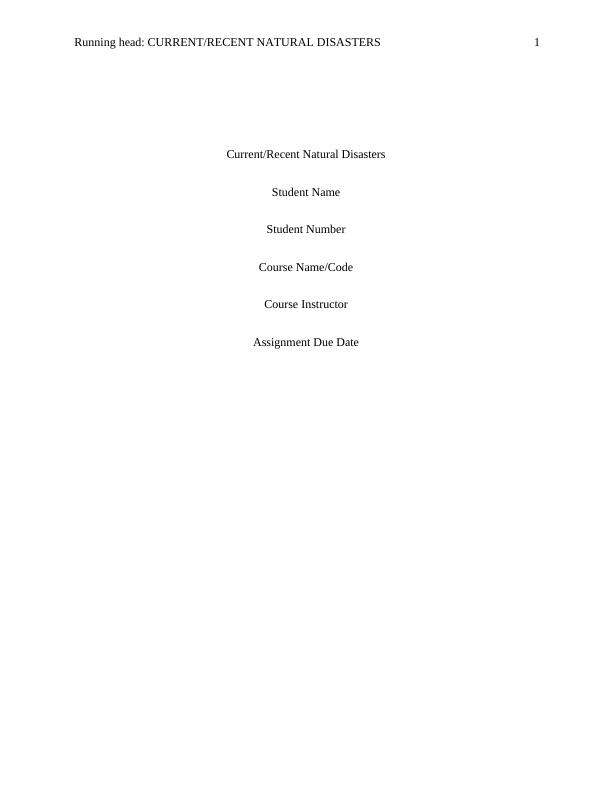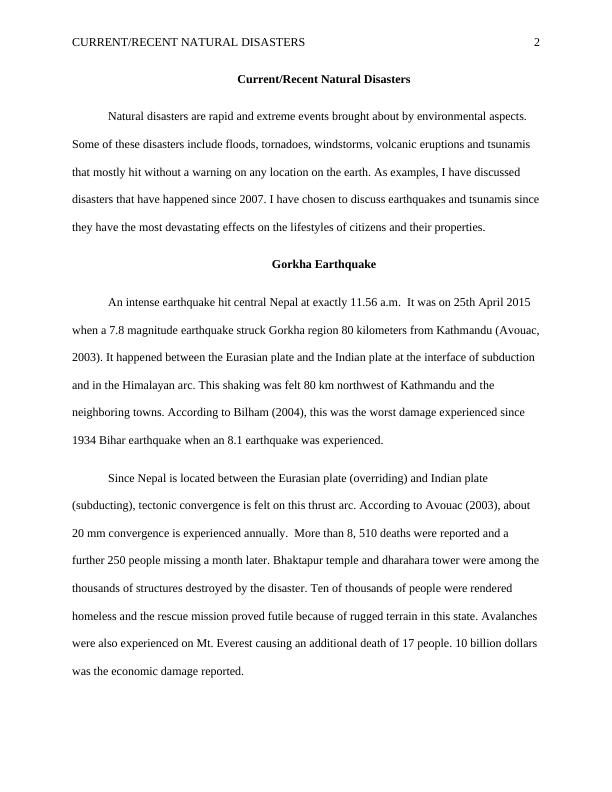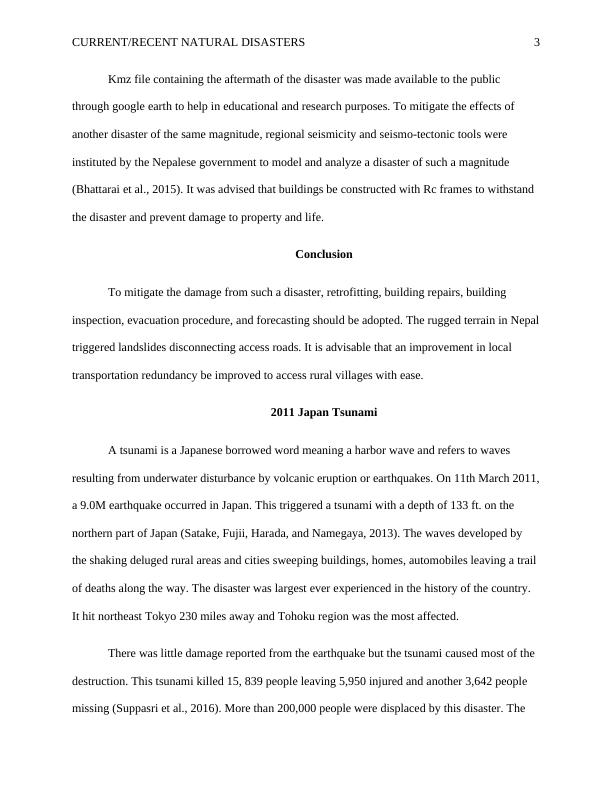Current/Recent Natural Disasters: Earthquakes, Tsunamis, and Hurricanes
Students are required to submit a 4 complete pages minimum report about 3 recent/current natural disasters.
8 Pages1625 Words219 Views
Added on 2023-05-30
About This Document
This article discusses recent natural disasters such as earthquakes, tsunamis, and hurricanes, including the Gorkha earthquake in Nepal, the 2011 Japan tsunami, and Hurricane Harvey in Texas. It also provides insights on the causes, effects, and mitigation measures for these disasters.
Current/Recent Natural Disasters: Earthquakes, Tsunamis, and Hurricanes
Students are required to submit a 4 complete pages minimum report about 3 recent/current natural disasters.
Added on 2023-05-30
ShareRelated Documents
End of preview
Want to access all the pages? Upload your documents or become a member.
Assignment on What is the Scientific Reason for Tsunami?
|4
|705
|10
Health Crisis in Nepal During and After the 2015 Earthquake
|14
|5520
|85
Nepal Earthquake: Results, Aspects, and Actions
|7
|1564
|428



